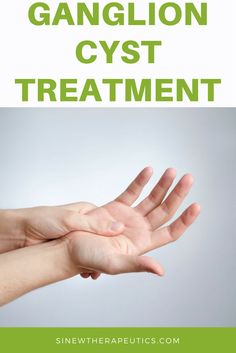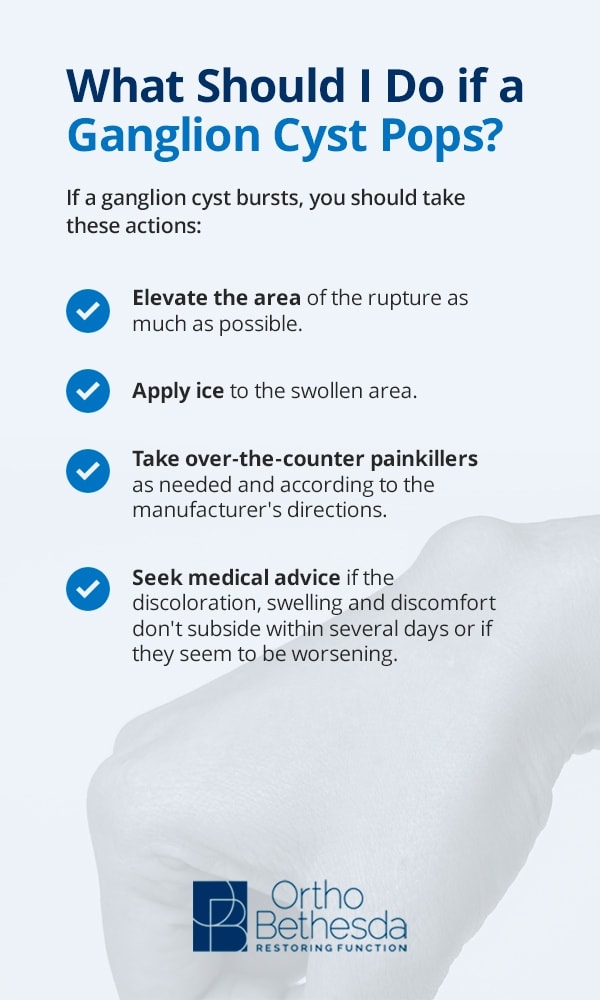
If you have a ganglion cyst, you might be wondering how to cure it. Depending on the location and severity, a ganglion cyst may be a single large lump or several small ones attached to a single stalk. The good news is that one-third to half of these cysts will disappear without medical treatment. Even if they do disappear, they should be treated by a doctor because they may be a symptom of another disease.
The first step in finding a ganglion cyst is recognizing its symptoms. The most common symptom of a ganglion cyst is pain. This is caused by the growth of the cyst, which presses against joint tissues and nerves. Patients often feel self-conscious when they see their symptoms, but the good news is that treatment is easy and effective. For mild pain, anti-inflammatory medications are available over the counter. A warm compress will improve circulation and promote fluid drainage, but it will not prevent a re-growth. Avoiding repetitive wrist movements and modifying shoe lace arrangements may also help.
There are several treatment options for ganglion cysts. While they are not considered life-threatening, they can be unsightly and impair function. The best way to cure a ganglion cyst is to consult a medical professional. Generally, a simple checkup with your doctor is sufficient. If your doctor believes that a ganglion cyst is cancerous, you should consult an orthopedist. Fortunately, many cysts will simply go away without treatment.
Some traditional home treatments for a ganglion cyst include applying a topical plaster to the area. This can reduce the size of the cyst. It’s also recommended to avoid touching the ganglion cyst with shoes, as it can aggravate it and cause infections. This treatment method may not work for you unless you experience persistent pain. If your doctor finds a painful ganglion cyst, the doctor will recommend treatment.

Surgery is an option for treating a ganglion cyst. In some cases, surgery may be the only effective treatment for a ganglion cyst. However, this approach is risky as it can damage the surrounding blood vessels and tendons and can cause a recurrence of the cyst. Various methods of treatment for a ganglion cyst can be used in different ways, and most of them are noninvasive.
If you have a ganglion cyst, a doctor can perform a number of tests to diagnose it. A needle aspiration is used to collect fluid from the ganglion cyst. In approximately 75% of cases, the ganglion cyst can be emptied using this method. For more advanced cases, a surgeon may need to remove the cyst. This procedure is often risky. It can also lead to infections and a recurrence.
People who have a ganglion cyst are prone to this, often found in women. Although the occurrence of ganglion cysts is rare, it can be difficult to find the cause of this condition. Prevention is not possible, but treatment options can make a ganglion cyst more manageable. It can be removed surgically, but most people opt for a natural treatment. If it doesn’t cause pain or discomfort, the ganglion cyst may go away on its own.
Surgery may be required if the ganglion cysts are out of control or causing problems. Surgical removal of a ganglion cyst is possible in some cases, but be aware that surgery can damage nearby blood vessels, tendons, or nerves. It is also important to understand that a recurrent ganglion cyst may require surgical removal if you are experiencing symptoms.
Surgery is another option for ganglion cysts. This procedure can remove the cyst itself, but it can also lead to infection or recurrence. For ganglion cysts, over-the-counter pain relievers are recommended. It will also help relieve the pain caused by the ganglion cyst. The recommendations on site https://emeovat.com/ can also help treat other forms of ganglion cysts, including abrasions.